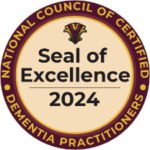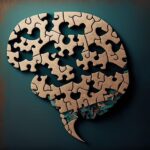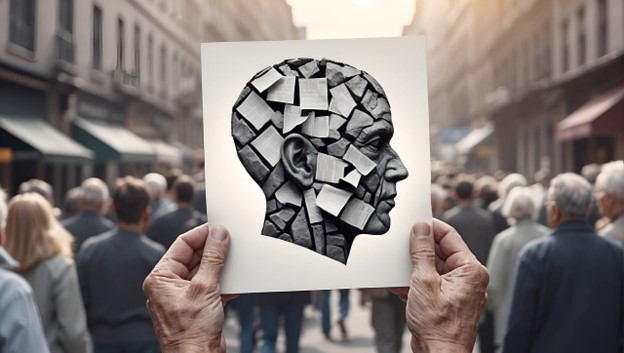Introduction
Lewy Body Dementia (LBD) is a complex and challenging neurodegenerative disorder that affects millions of individuals worldwide. Named after Frederich H. Lewy, the scientist who discovered abnormal protein deposits in the brain, LBD is characterized by progressive cognitive decline, motor symptoms, and fluctuations in alertness and attention. In this article, we’ll delve into the intricacies of Lewy Body Dementia, exploring its symptoms, diagnosis, and strategies for care.
What is Lewy Body Dementia?
Lewy Body Dementia is a type of dementia that shares similarities with both Alzheimer’s disease and Parkinson’s disease. It is characterized by the presence of abnormal protein deposits, called Lewy bodies, in the brain. These deposits disrupt the normal functioning of brain cells, leading to a decline in cognitive abilities, movement difficulties, and changes in behavior and mood.
Symptoms of Lewy Body Dementia
- Cognitive Decline: Individuals living with LBD often experience progressive cognitive decline, including problems with memory, attention, and executive function. They may have difficulty with tasks such as planning, problem-solving, and decision-making.
- Visual Hallucinations: Visual hallucinations are a common symptom of LBD, often involving seeing people, animals, or objects that are not actually present. These hallucinations can be vivid and realistic, causing distress and confusion for the individual.
- Fluctuations in Alertness and Attention: One of the hallmark features of LBD is fluctuations in alertness and attention. Individuals may experience periods of lucidity followed by sudden episodes of confusion or drowsiness. These fluctuations can occur throughout the day and may be triggered by stress, fatigue, or changes in medication.
- Parkinsonism: Many individuals living with LBD develop movement symptoms similar to Parkinson’s disease, such as tremors, stiffness, slowness of movement (bradykinesia), and difficulty with balance and walking. These motor symptoms can significantly impact mobility and daily functioning.
- REM Sleep Behavior Disorder (RBD): RBD is a sleep disorder characterized by vivid and often violent dreams accompanied by vocalizations or physical movements during REM sleep. It is commonly seen in individuals living with LBD and can precede the onset of other symptoms by several years.
- Autonomic Dysfunction: LBD can affect the autonomic nervous system, leading to changes in blood pressure, heart rate, digestion, and bladder function. Symptoms may include orthostatic hypotension (a drop in blood pressure upon standing), urinary incontinence, constipation, and fluctuations in body temperature.
Diagnosis and Management
Diagnosing Lewy Body Dementia can be challenging due to its overlapping symptoms with other neurodegenerative disorders. A comprehensive evaluation by a neurologist or dementia specialist is essential for an accurate diagnosis. This evaluation may include a thorough medical history, physical examination, cognitive testing, imaging studies (such as MRI or CT scans), and sometimes additional tests to rule out other possible causes of symptoms.
Once diagnosed, managing Lewy Body Dementia typically involves a multidisciplinary approach aimed at addressing the diverse needs of the individual. Treatment may include medications to alleviate symptoms such as hallucinations, movement difficulties, and sleep disturbances. However, it’s important to note that some medications commonly used to treat other forms of dementia, such as antipsychotics, can worsen symptoms in individuals with LBD and should be used with caution.
In addition to medication management, supportive care strategies are crucial for optimizing quality of life for individuals with LBD and their caregivers. These may include:
- Education and Counseling: Providing education and support to individuals and their families about LBD can help them better understand the condition and cope with its challenges. Counseling and support groups can also offer emotional support and practical guidance for managing day-to-day issues.
- Environmental Modifications: Making modifications to the home environment, such as removing tripping hazards, installing grab bars, and improving lighting, can enhance safety and mobility for individuals with LBD.
- Structured Routine: Establishing a predictable daily routine can help reduce confusion and agitation in individuals with LBD. Regular meal times, structured activities, and consistent bedtime routines can promote a sense of stability and familiarity.
- Physical Exercise: Regular physical exercise, tailored to the individual’s abilities, can help improve mobility, balance, and overall well-being. Activities such as walking, tai chi, and gentle stretching exercises can be beneficial.
- Nutrition and Hydration: Maintaining a healthy diet and staying hydrated are important for overall health and well-being. Caregivers should ensure that individuals living with LBD have access to nutritious meals and plenty of fluids throughout the day.
- Respite Care: Caring for someone with LBD can be physically and emotionally demanding. Respite care services can provide temporary relief for caregivers, allowing them to take breaks and attend to their own needs.
Conclusion
Lewy Body Dementia is a complex and challenging condition that requires a comprehensive approach to diagnosis, management, and care. By understanding the symptoms and challenges associated with LBD, healthcare professionals, caregivers, and individuals affected by the condition can work together to optimize quality of life and provide meaningful support throughout the journey. Ongoing research into the underlying causes and potential treatments for LBD offers hope for improved outcomes and better management strategies in the future.
























